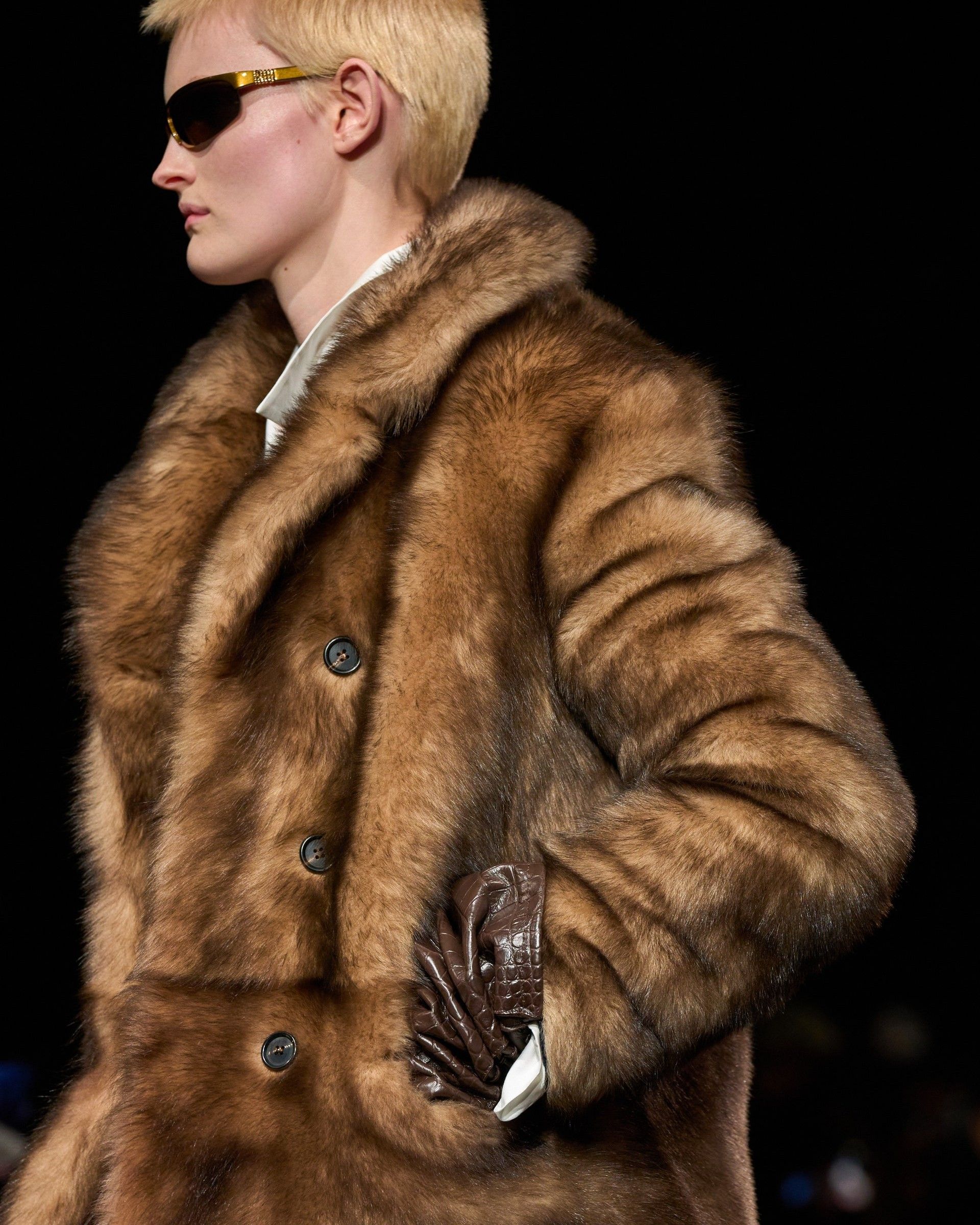
Fur is in but nobody is buying it It's always best to ask for granny's
During last winter, the fashion world welcomed the return of fur, a look trending on TikTok as the mob wife aesthetic. While the allure of a soft and warm coat remains irresistible to style enthusiasts, wearing animal skin in 2024 is far from a badge of honor, especially for environmentalists. Despite this, fur has started gaining attention even from men, appearing on runways during both women's and men's Fashion Week, from Diesel to Marni. Other trends, like quiet luxury and the animal print, have contributed to the resurgence of fur, reviving articles and silhouettes from past eras. However, while consumers' passion for vintage is at an all-time high, the same cannot be said for clothing that only looks second-hand but isn't: while searches for “fur coat” have reached a seven-year peak (an 85% increase from last fall, which was already up by 42% compared to 2022), the fur market is in constant decline, dropping from a value of $14.7 billion in 2013 to $3.4 billion today, according to Euromonitor International.
Despite more brands bringing fur and Afghan coats to the runway, including Miu Miu, Saint Laurent, Bottega Veneta, and Loewe, global exports of the material have fallen to their lowest levels since the 2000s. Although the “mob wife” trend is on the rise, there’s a plausible explanation for the slowdown in sales: years of campaigns and protests by animal rights and environmental activists have shaped public perception, leading even major players in the fashion industry to abandon fur entirely. Since 2017, Fashion Week, luxury conglomerates like Kering, multi-brand retailers like Selfridges, and even entire governments, including the European Union and the state of California, have banned the use of fur. Indeed, some of the coats seen on runways were faux, made from cashmere at Gabriela Hearst’s show and denim at Diesel’s. Beyond the negative consumer sentiment toward “brand-new” fur, the sector's collapse has also been exacerbated by the war in Ukraine and the Chinese crisis, events that have destabilized the export market for both production and sales.
To try to revive the sector, companies and brands are attempting to rebrand fur with sustainable initiatives and productions, focusing on product quality and craftsmanship while introducing new standards and certifications to ensure responsible material creation, such as Furmark. LVMH, one of the few luxury groups still using fur in its collections, is a major sponsor of Furmark, reportedly paying over $300,000 for an annual subscription, according to BoF. As long as major industry names like Louis Vuitton and Celine (both part of LVMH) continue showcasing fur on runways, trends like mob wife or winter cowboy will continue to captivate audiences—provided brands manage to sell the runway coats and designers and CEOs withstand protests from groups like PETA and other animal rights activists.











































